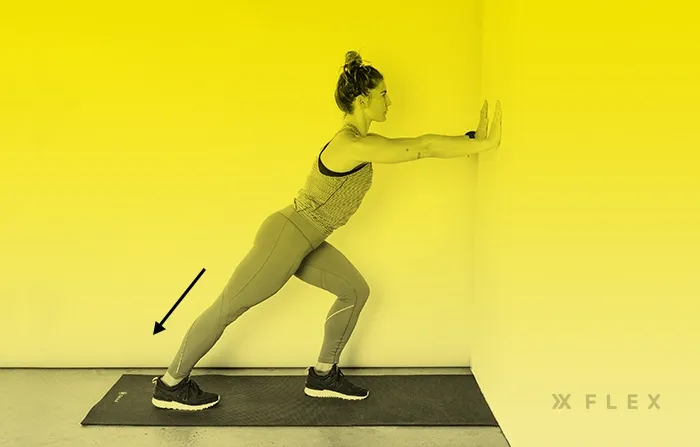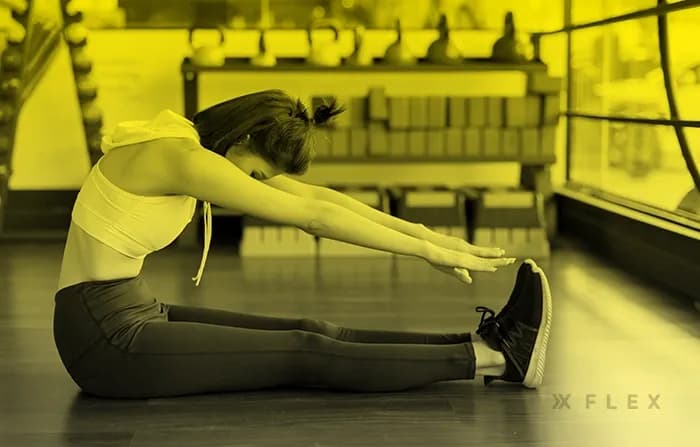Is Ballistic Stretching Safe? Safety Tips, Pros, and Cons
What happens when you push your muscles beyond their limit? Learn more about whether or not ballistic stretching is safe.
Should you go ballistic with your stretching? Well… don’t get ahead of yourself. It may not be the safest technique. Is ballistic stretching even safe for your muscles?
Many of us can get a little extreme with our workouts. The thrill of being able to run farther, jump higher, or stretch deeper feels second to none.
But when attempting high-risk activities, how far is too far?
Today, we’re breaking down a fitness hot topic: ballistic stretching. This extreme range of motion technique can push your muscles into places they’ve never been before.
But can ballistic stretching lead to pulled muscles, muscle pain, or injuries that will keep you out of the gym?
Let’s get familiar with ballistic stretching. We’ll learn whether there’s a safe way to perform this type of stretch and take your workouts to new levels.
What is Ballistic Stretching?
Ballistic stretching pushes you out of your comfort zone. Literally.
The technique involves moving your body in and out of stretch positions beyond the body’s normal range of motion.
The aim is to get a bit uncomfortable with the ultimate goal of pushing your flexibility to its limit. But how far is too far?
Ballistic stretching relies on momentum to get you into positions that are outside your body’s normal range of motion.
Say you’re trying to get into the splits. Maybe you jump with your legs apart and land in the splits. Or you might have a partner sit on your back to try to force your body into a deeper split position.
This is an example of ballistic stretching. The technique relies on jerky or unnatural movements for the body.
Although it can improve your flexibility (by force), is ballistic stretching safe? And can it pose long-term risks to your flexibility?
First, let’s take a look at the other forms of stretching to see how ballistic stretching fits into the equation.

Types of Stretching
Before we learn more about whether ballistic stretching is safe, it’s important to get familiar with the different ways to stretch. What are the different types of stretching? And when should you incorporate them into your routine if you’re looking to improve your flexibility?
Some of these terms and techniques overlap. For example, isometric stretching is considered a type of active stretching, since it is done in place.
Let’s look at the different categories of stretching:
Ballistic Stretching
Ballistic stretching uses momentum to increase flexibility. By using jerking or forceful movements, this type of stretch pushes you into extreme positions. The hope is that your body will get used to the extreme positions and your muscles will eventually adapt.
This technique can get you into positions that are outside your body’s normal range of motion.
Dynamic Stretching
Dynamic is stretching that involves movement. This is different from static stretching, where you hold still in one position to stretch. Although dynamic stretching and ballistic stretching have similarities, in that you move in both of them, dynamic stretching is much more controlled. You work within your comfortable range of movement to slowly increase flexibility over time.
Active Stretching
Active stretching involves holding a stretch in place with only the strength of your own body. For example, if you raise your arm overhead and do a lateral side bend, holding yourself in place with just your muscles actively working make this an active stretch.
Passive Stretching
Passive stretching involves supporting your stretch with another part of your body or a device to help deepen the stretch.
Say you’re stretching your hamstrings with your leg overhead. If you use your hands or an exercise band to pull your leg toward you for a deeper stretch, it is passive stretching. If you let go of the leg and keep it overhead, the stretch becomes active.
Isometric Stretching
Isometric stretching is a type of static stretch that introduces manual resistance in an attempt to deepen your stretch.
Let’s say you’re stretching your feet. You want to improve your ability to point the feet through an isometric stretch.
You may try grabbing the insteps and balls of your feet to create resistance. Trying to push your feet against this manual resistance to get them to point is an isometric stretch.
You can also have a partner or piece of equipment to introduce resistance for isometric stretching.

Static
Static stretching means a stretch that is done in place rather than moving around. Think the opposite of a dynamic stretch.
What is the Stretch Reflex?
When you stretch a muscle outside of its normal position, your body relays information on this change to your brain.
The brain processes this change in the muscle and the time that it takes for the muscle to change length.
This causes the muscle to contract in response to stretching. This is called the stretch reflex.
Here’s a quick science lesson: The contraction rate of your muscles will increase as long as the stretch is performed within your body’s reasonable limits.
When your muscle stretches, the muscle spindles stretch too. What are muscle spindles? They’re the stretch receptors in your muscles that send signals about muscle length to your brain and central nervous system. They can gauge when a muscle is lengthened or shortened.
Stretching causes more neurons to fire in your muscle spindles. These send information to your brain that will cause a muscle to contract if the stretch is too much.
Because ballistic stretching is unpredictable, it can both trigger and inhibit the stretch reflex. But sometimes the contractions can happen in an unsafe position for your muscle. The result: torn ligaments and muscle injuries.
Is Ballistic Stretching Safe?
No. Ballistic stretching is dangerous and should not be performed.
Overall, most of the research available suggests that ballistic stretching is not a safe technique to practice over time.
Although there are anecdotal cases of being able to improve range of motion, ballistic stretching is not sustainable over time.
For stretches that improve your mobility and ways to increase flexibility, read our article “Mobility Test.” Remember that taking care of your muscles in recovery is just as important as stretching for long-term muscular health.
For example, you may want to explore techniques like foam rolling or learn more about muscle scraping.
This stretch technique has a high likelihood of injury, especially pulled muscles.
Keep in mind— although it’s fun to show off your flexibility, it’s far more useful to build long-term flexibility that is sustainable. Can you really say you “can do the splits” if it’s a move you can barely maintain?
It’s a lot safer (and more impressive) to work gradually into high-flexibility positions. That way, you warm up your muscles, don’t shock your system, and will be able to maintain flexibility into old age.
The Big Picture
Compared to other types of stretching, ballistic stretching is dangerous and should not be performed. It comes with a higher injury risk.
Ballistic stretching is far less controlled than other types of stretching, like conventional dynamic, static, or isometric stretching.
Because of this, it’s easy to push yourself too far and sustain injuries. Happy (safe) stretching!
Safety always comes first, when it comes to stretching or any other exercise. It helps if you can track your plan.
Flex AI offers an all-in-one workout platform to help you learn new exercises, visualize your fitness journey, and keep all your PRs in one place.
We’ve made it simple to work on customized fitness plans or to introduce a little friendly competition to your fitness community by sharing exercises with your friends. Get started for free through the Flex fitness app.
Related articles


Get fit with Flex
Build muscle & lose weight fast for free.
Available on iPhone + Apple Watch





